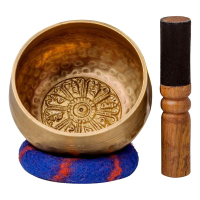What is a sound bath? Plus, all the unexpected benefits you can expect to enjoy
Writer Aoife Hanna reveals what a sound bath is and what going to one is really like, plus benefits and more
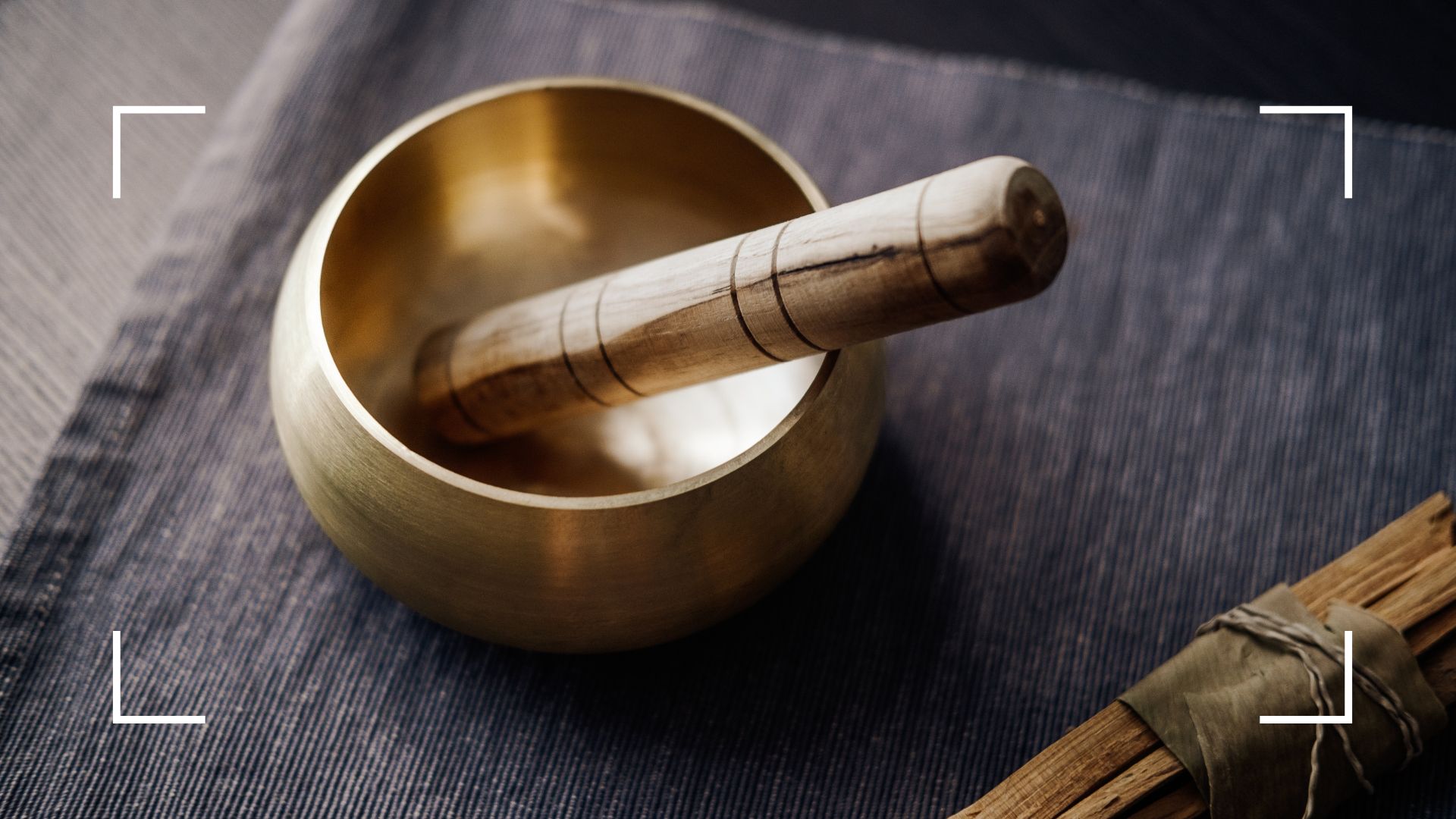

If you've ever felt yourself swept away, immersed in music or the audio of the natural world then perhaps you've considered the healing power of sound. Maybe you've heard of gongs and singing bowls and are wondering what is a sound bath?
It's no surprise that the wellness industry is booming as many of us continually seek a deeper connection with our inner selves and strive for physical and mental wellbeing. Whether you're a fan of holistic treatments or just curious to learn more, there are well-documented sound bath benefits for common issues like stress and anxiety.
Sound baths can be an experience worth considering if you're looking to recover from burnout too, as they help you tune into your body in a rather unique way. Unlike other more mindful forms of meditation or physically active types, like walking meditation, sound baths help you slip into a meditative state via the power of ancient instruments and techniques. Keen to learn more, I looked into the science behind sound bath benefits, experienced one for myself, reached out to sound bath experts.
What is a sound bath?
A sound bath is a deeply immersive, full-body listening experience, says world-renowned sound therapist, meditation teacher Sara Auster. "It uses sound and simple mindfulness techniques to invite gentle yet powerful therapeutic and restorative processes to the mind and body."
The practice features an expert practitioner playing instruments including gongs, Tibetan singing bowls, tuning forks, and crystal bowls to make unique sounds and vibrations that soothe your body and mind. The frequencies emitted from each sound tool depend on what it's made from, its pitch, and how it's played. Although there's no hard and fast rule, these experiences tend to last 60 - 90 minutes.
Auster, who is also the author of Sound Bath: Meditate, Heal and Connect through Listening, explains that there's a difference between sound baths and traditional guided meditation. "This brings your focus back to the breath, a mantra, an emotion, or a part of the body but during a sound bath, the sound itself is 'guiding' the meditation," she says. "This sound helps facilitate awareness of the present moment."
Certified sound healing practitioner Lauren Raby explains the experience will gently guide you to a state of deep relaxation, reducing your stress levels. She describes it as, "a beautiful and easy way to achieve a meditative state, relax your nervous system and find inner calm."
Sign up for the woman&home newsletter
Sign up to our free daily email for the latest royal and entertainment news, interesting opinion, expert advice on styling and beauty trends, and no-nonsense guides to the health and wellness questions you want answered.

How do sound baths work?
The sounds activate the parasympathetic nervous system, which is the 'rest and digest' state, rather than the active 'fight or flight' response, explains Raby, who also founded Saiki Wellness.
It's a response backed up by science too, as research from the University of California found that sound meditation - specifically Tibetan singing bowl meditation - has a positive effect on mood, lessens anxiety and pain, and improves spiritual wellbeing.
Experts in the field, including sound bath practitioner Leonie Washington, also believe the positives of sound baths come from the waves and vibrations of the instruments too. "People are immersed in sound waves produced by different instruments such as singing bowls, gongs, chimes, and other sound tools," says Washington, who works with UK Holistic Training.
Given this, it's not surprising that instruments used in sound baths often feature in the best guided sleep meditations, and that there are many benefits of sound baths that go beyond what you may expect.
Benefits of sound baths
- Mental wellbeing: Scientific studies, including that by the University of California as above and JJT University in Rajasthan, India, have found sound baths help ease symptoms of depression, anxiety, and sadness.
- Meditation: Sound waves can deepen a meditative practice, bringing you into a meditative state faster than other methods.
- Relaxation: As sound baths help to activate the parasympathetic nervous system, a network of nerves that help the body recover after stress or danger, they can help calm your body.
- Better sleep: Looking to learn how to sleep better? Sound baths can help by quieting a busy, stressed-out body and mind.
What happens during a sound bath?
Maria Lodetoft is a sound and energy healer with a natural affinity to cosmic energies. She kindly welcomed me to a private sound bath at London's Mandrake Hotel, which has its own spiritual wellbeing program and concierge service.
She tells me that the main reason clients seek out her services is stress and burnout from work - something many of us can relate to. "Especially since lockdown," adds Lodetoft, whose journey to sound healing came after she left her initial career in marketing.
At the beginning of the sound bath, I lay down on a sofa and tried to relax as Lodetoft guided me, telling me to take some deep breaths in and out. If you've ever taken the time to consider how to breathe and how much it can help in grounding your energy, then you know how good this feels.
Using her crystal alchemy bowls, Lodetoft was able to help me slip into a deep meditation in a remarkably short amount of time - something that sound baths are highly regarded for. For a neurodiverse individual like myself, who experiences many of the symptoms of ADHD in women, getting into a meditative state can be a challenge and these healing frequencies really sped things up.
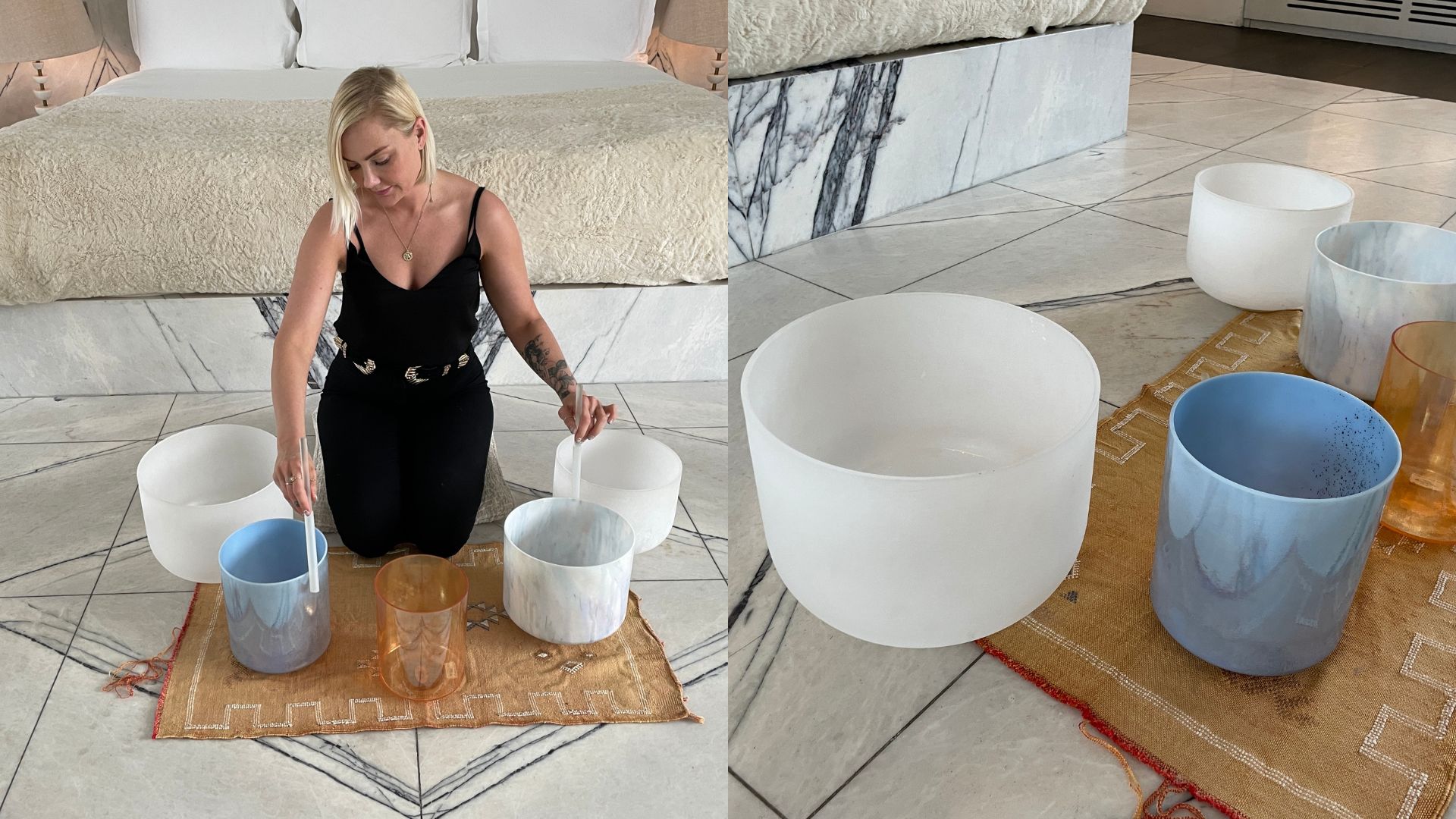
I could hear the soothing sounds of the alchemy bowls as well as feel their frequencies reverberating throughout my body, as I managed to get into a very deep meditation. With my body feeling heavy, relaxed, and almost tingling from the vibrations of the frequencies, I truly felt as though I was on another spiritual plain.
To rouse me from my meditative slumber, Lodedoft gently instructed me to wriggle my fingers and toes to slowly bring myself back into the room, which I did, albeit in a far calmer, more grounded state.
In the wake of the truly enlightening journey into the world of sound baths, I couldn't help but think of Serbian-American engineer, inventor, and physicist Nikola Tesla, who once said: “If you want to find the secrets of the universe, think in terms of energy, frequency and vibration.” After this magical experience, I think he may well have been onto something.
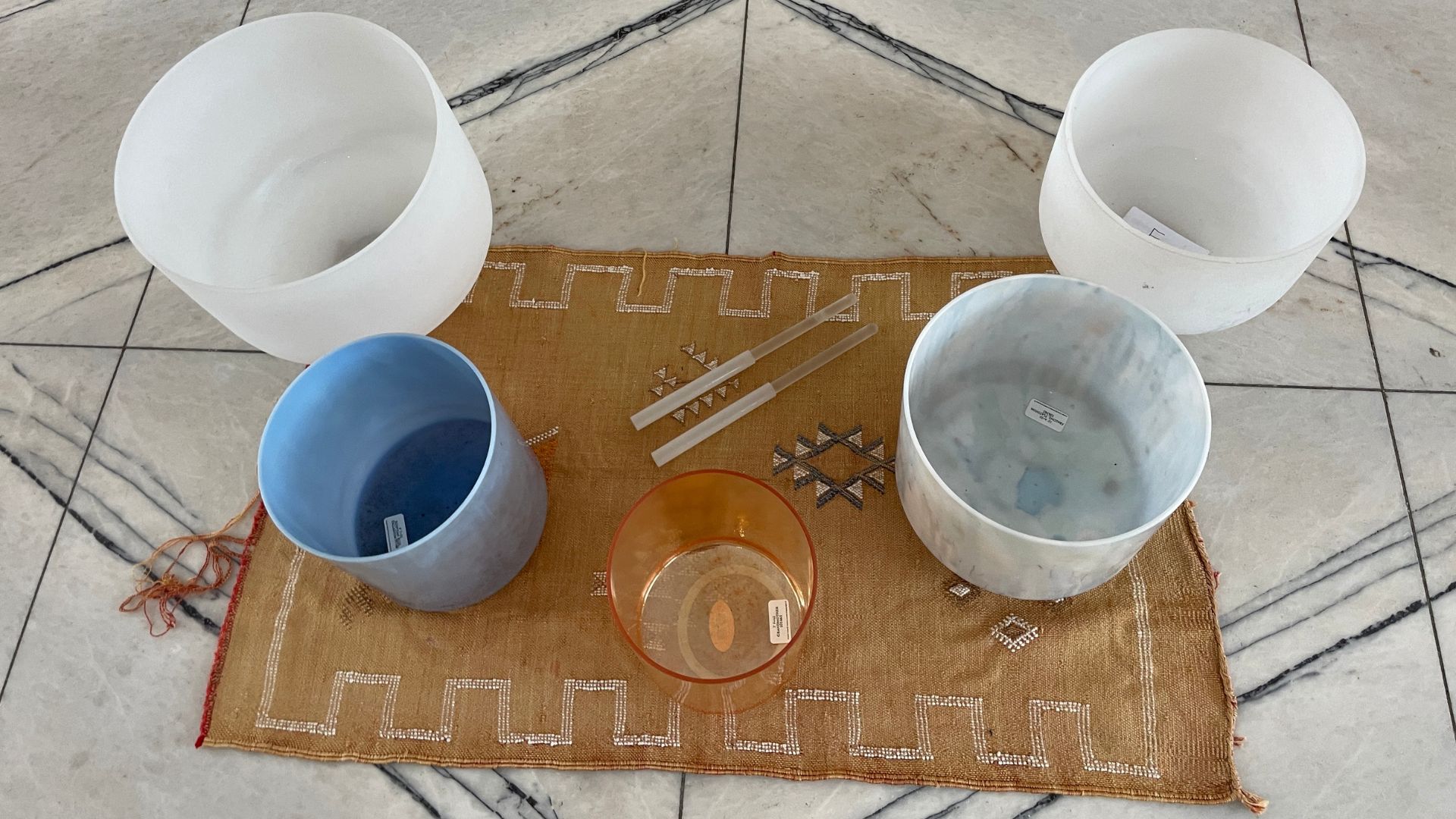
How to do a sound bath
Learning to do your own DIY sound bath may be of interest, especially after you've experienced the sound bath benefits in a studio already. "If you’re having a sound bath at home, the same rules apply," says Washington. "Get comfortable, get hydrated, and make sure you have plenty of time to sink into the sounds and vibrations."
Of course, this ancient art is something that people spend a long time learning, and that expertise is not to be undervalued. However, who says you can't give it a try? Washington tells us that to do a sound bath at home, you will need sound tools such as singing bowls, gongs, or chimes.
Tibetan Singing Bowl Set with Healing Mantra Engravings $49 / £48 | Amazon
This meditation bowl set is a good choice for anybody looking to experiment with doing their very own sound bath. It includes a wooden striker and a hand-sewn cushion, and it's covered in beautiful healing mantra engravings.
Complementing this with other instruments, such as your voice, should set you up on the right path. "You can practice humming wherever you are which stimulates your vagus nerve and, in turn, improves its function, relaxing your whole nervous system," says Raby.
To begin, start with a few deep breaths to settle into the relaxed state. Then, start playing the sounds. "Focus on the sounds and vibrations and allow yourself to be fully present in the moment. You can also incorporate breathing exercises, visualisation, or affirmations to enhance the experience," says Washington.
Otherwise, there are an abundance of online sources from free options, like the best podcasts to fall asleep to, Youtube, and any music streaming service, as well as subscription services like Auster's platform PAUSE, which offers on-demand sound baths.
What to wear to a sound bath
Comfort is queen when it comes to having a genuinely relaxing, luxurious experience - as is staying warm enough. Nothing makes you feel the cold quite as much as not moving for a length of time and believe me, once you get into a sound bath, you'll be utterly still.
"Dress comfortably," suggests Auster. "Any loungewear or comfortable outfit is ideal. Usually, participants are invited to lie down on mats. Blankets are provided for additional comfort and often an eye mask is recommended to reduce external light, and keep the eyes closed during the experience."
Raby agrees. "Your body temperature tends to drop [during a sound bath]," she adds. "So I always encourage people to stay warm with layers or a blanket. In my opinion, warm cozy socks are a must."
As well as wearing clothes that'll keep you comfortable, it's important to leave distractions at the door in other ways. "Switch off anything that might interfere with the meditation, such as mobile phones, and remove items such as jewelry that may create unwanted sounds," says Washington.

Aoife is an Irish journalist and writer with a background in creative writing, comedy, and TV production.
Formerly woman&home's junior news editor and a contributing writer at Bustle, her words can be found in the Metro, Huffpost, Delicious, Imperica and EVOKE.
Her poetry features in the Queer Life, Queer Love anthology.
Outside of work you might bump into her at a garden center, charity shop, yoga studio, lifting heavy weights, or (most likely) supping/eating some sort of delicious drink/meal.
-
 The Handmaid's Tale: Does June get Hannah back at the end of season 6?
The Handmaid's Tale: Does June get Hannah back at the end of season 6?It's been June's endgame from the very first moments of The Handmaid's Tale, but will she be reunited with her daughter Hannah at the end of season 6?
By Lucy Wigley
-
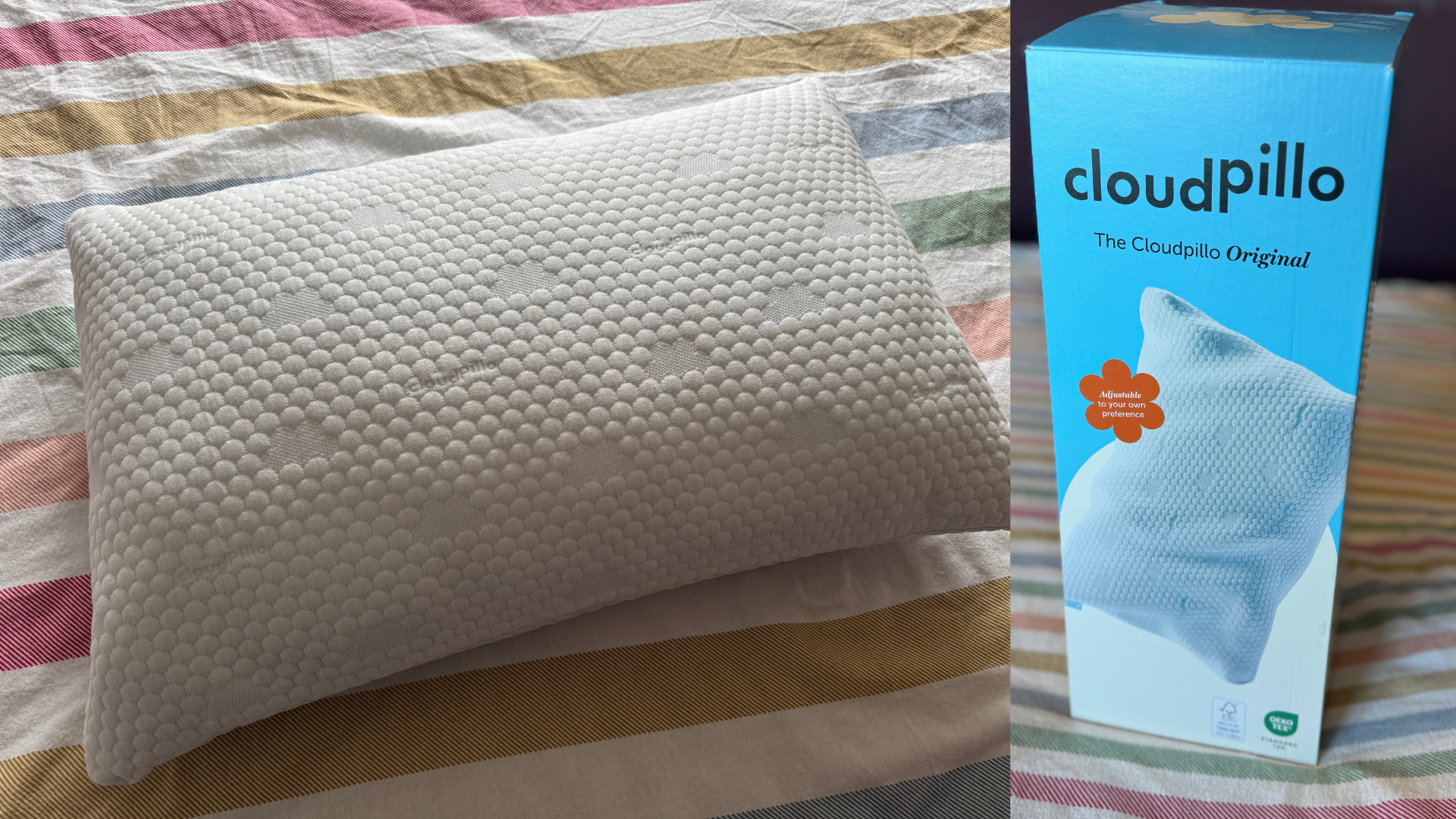 My decades-long quest for the perfect pillow ends here, but forget what you think you know about memory foam
My decades-long quest for the perfect pillow ends here, but forget what you think you know about memory foamPacked full of tiny pieces of shredded memory foam with a dual-sided cover to keep you cool, this is the next best thing to sleeping on a cloud
By Heidi Scrimgeour
